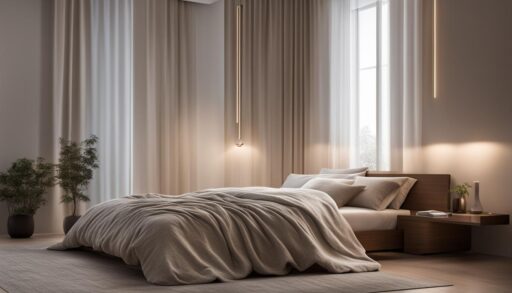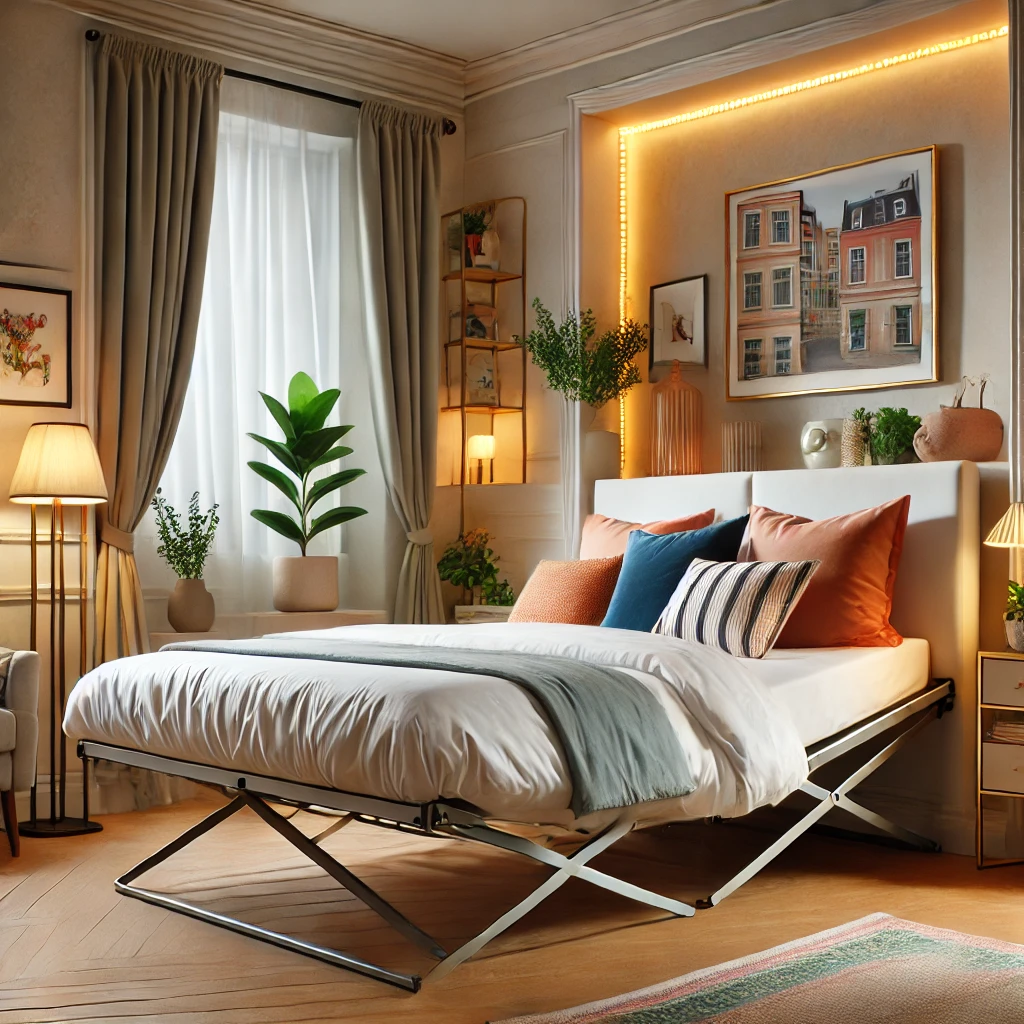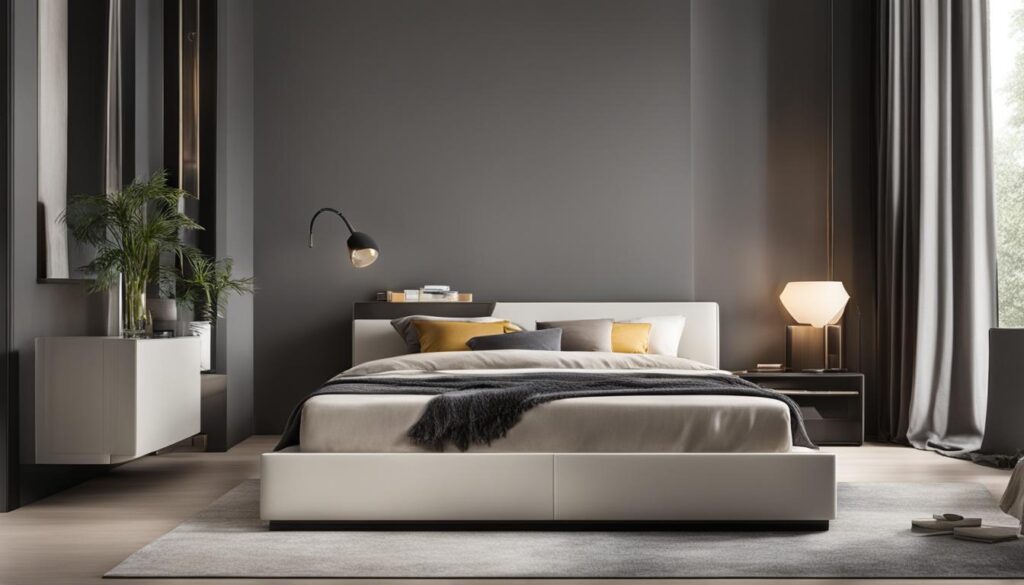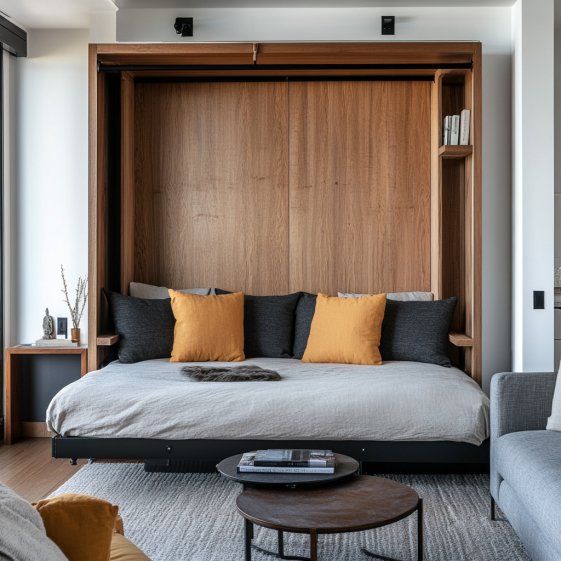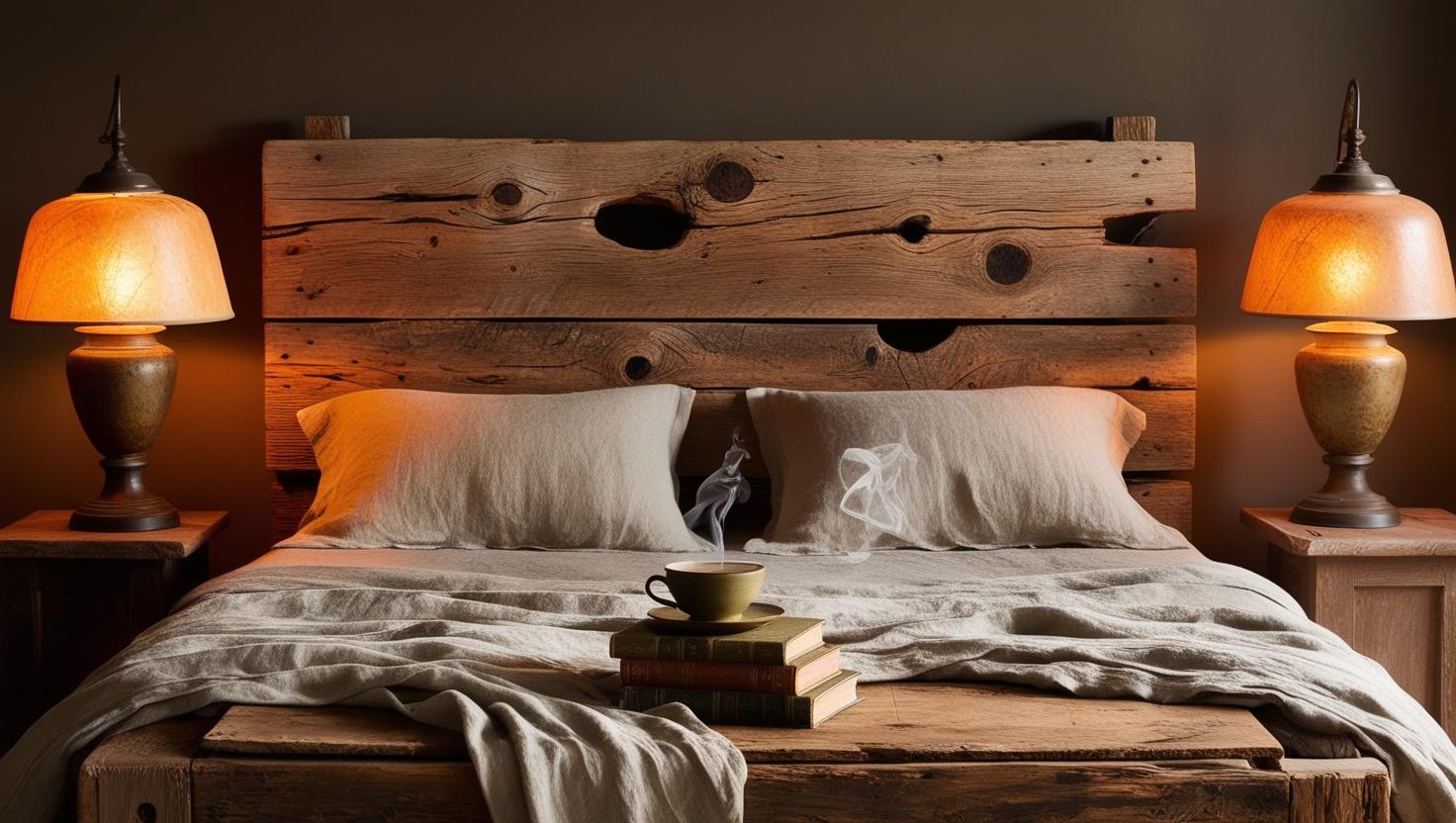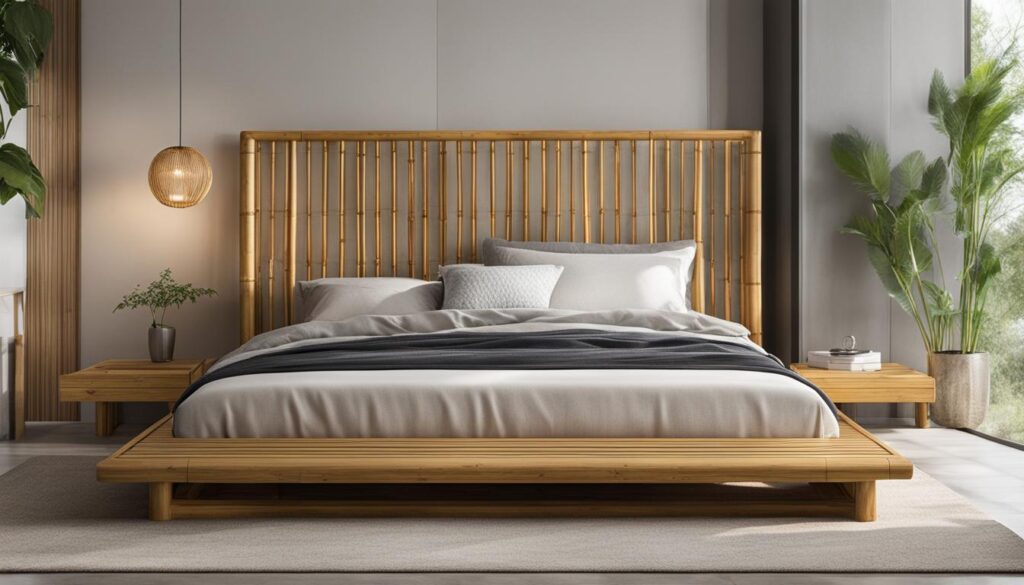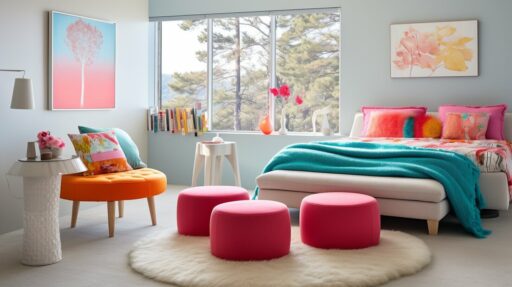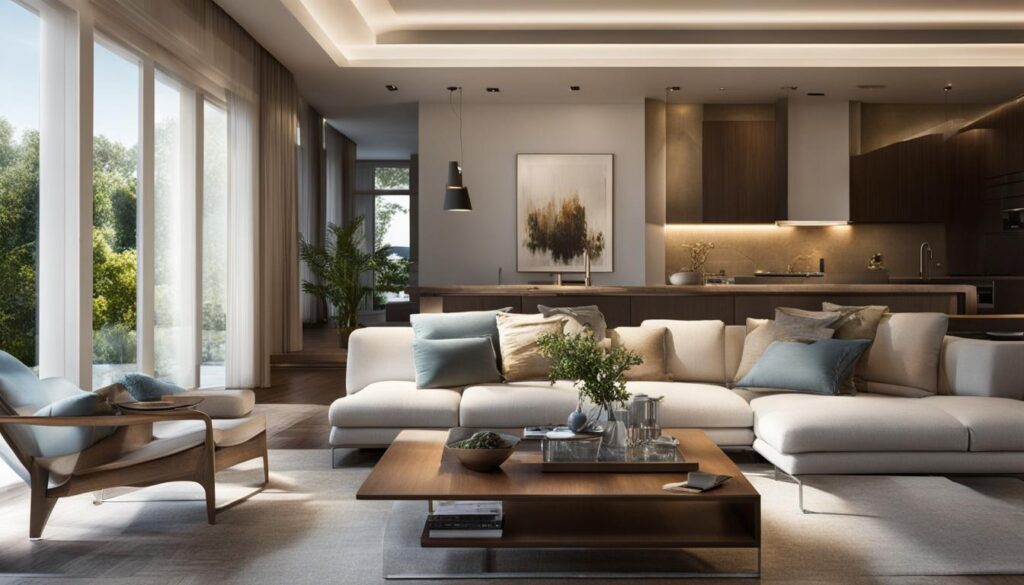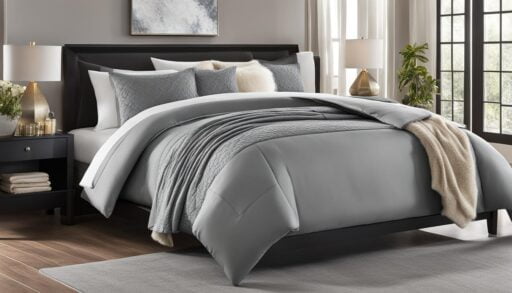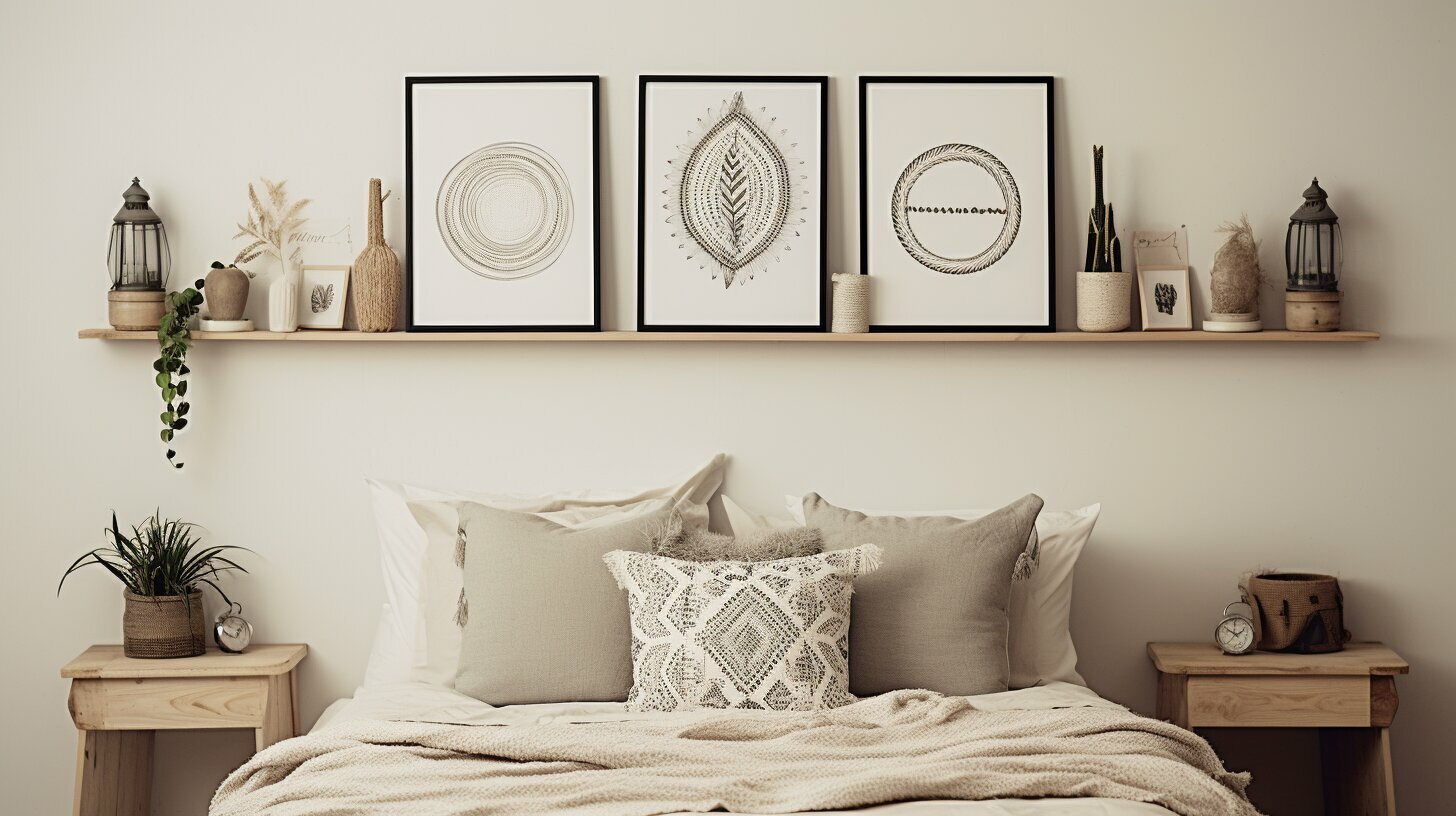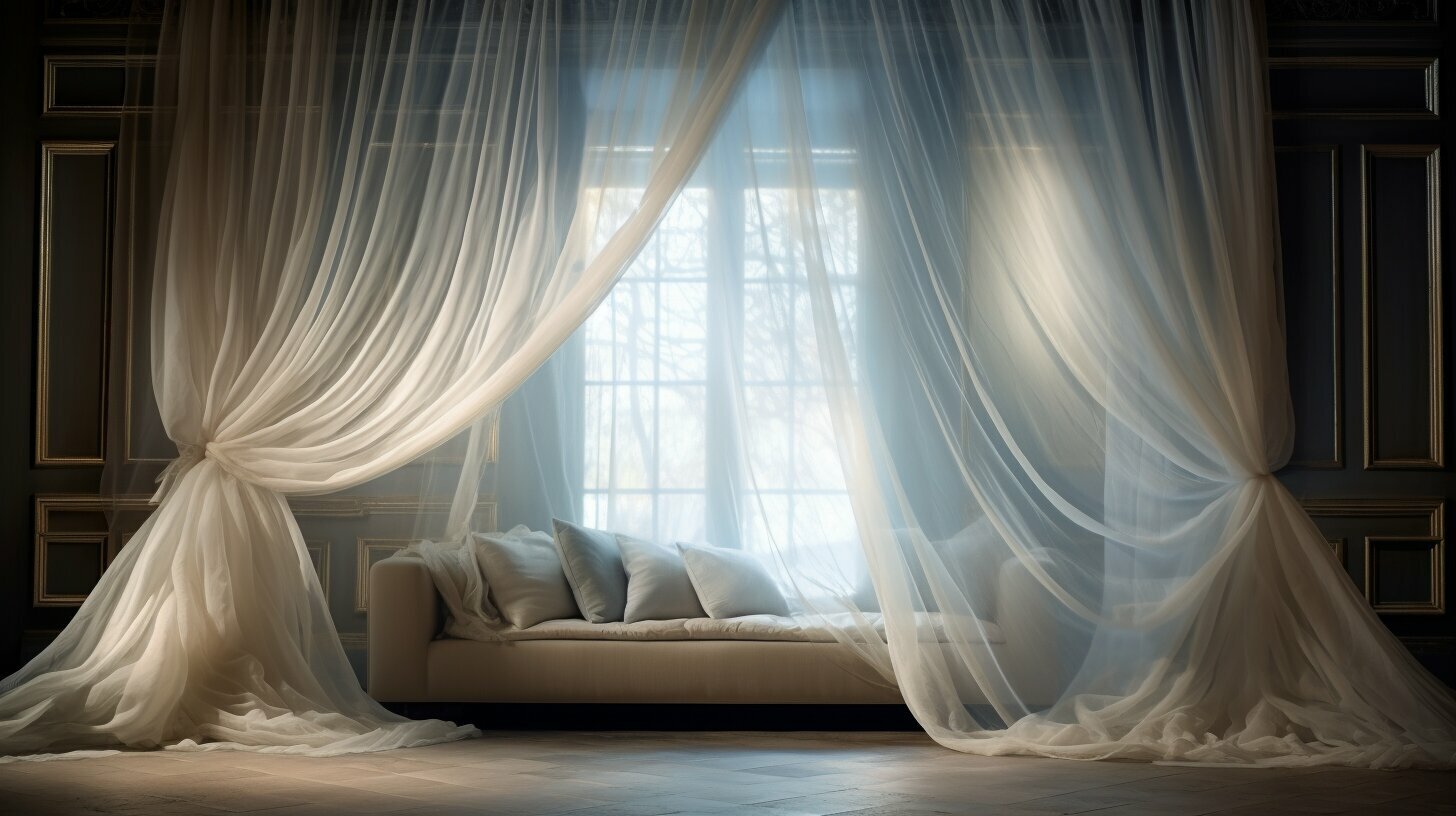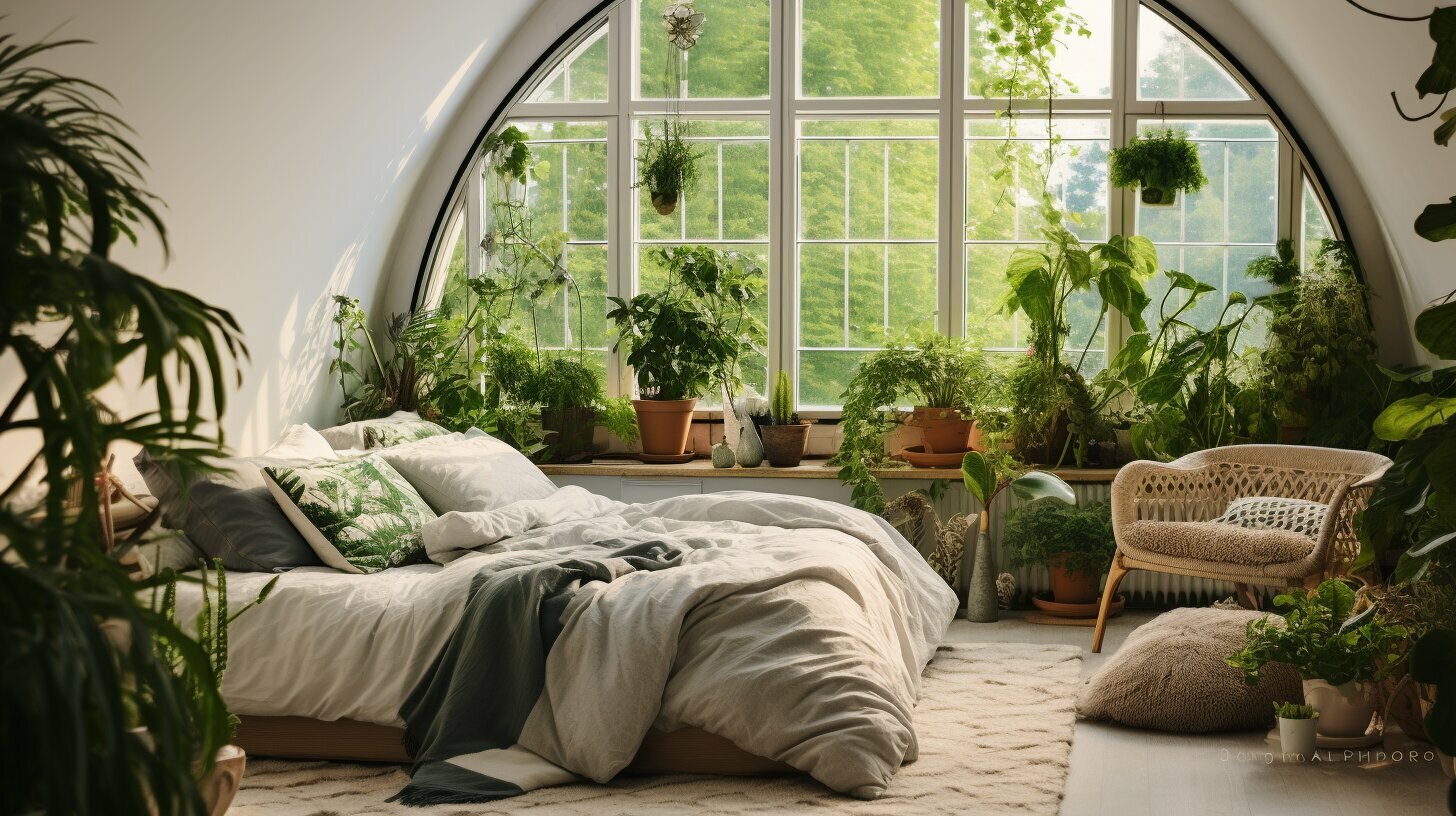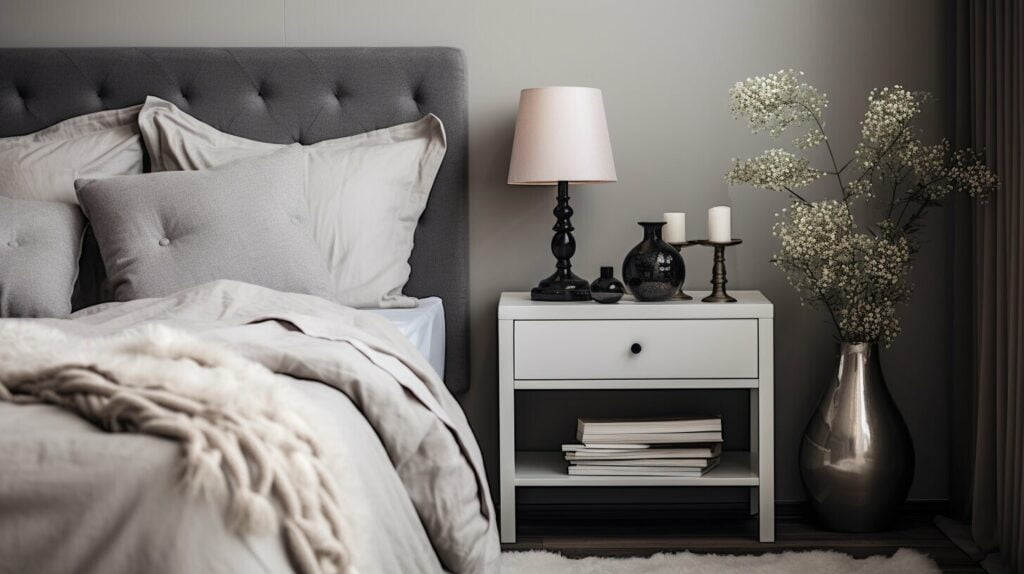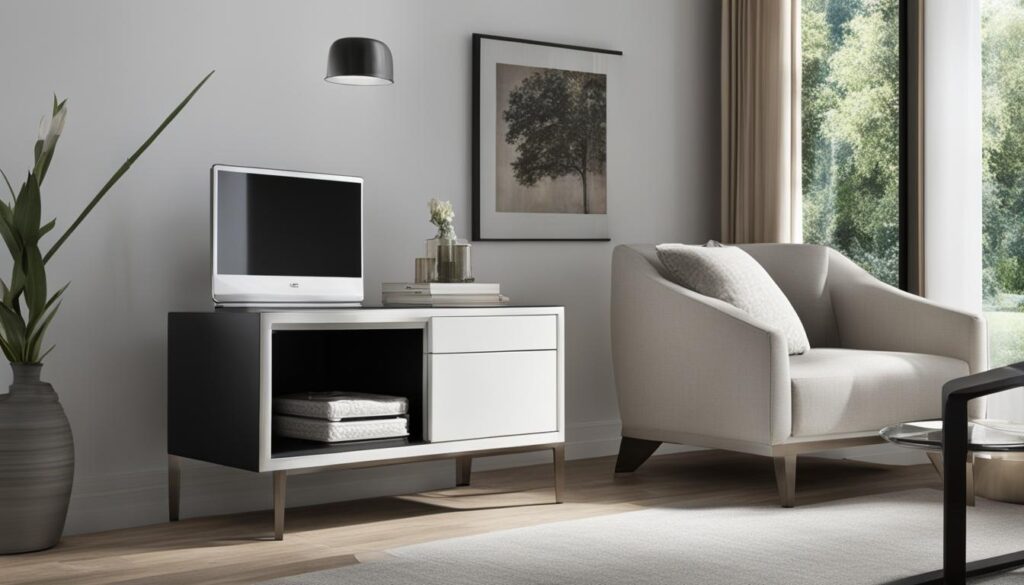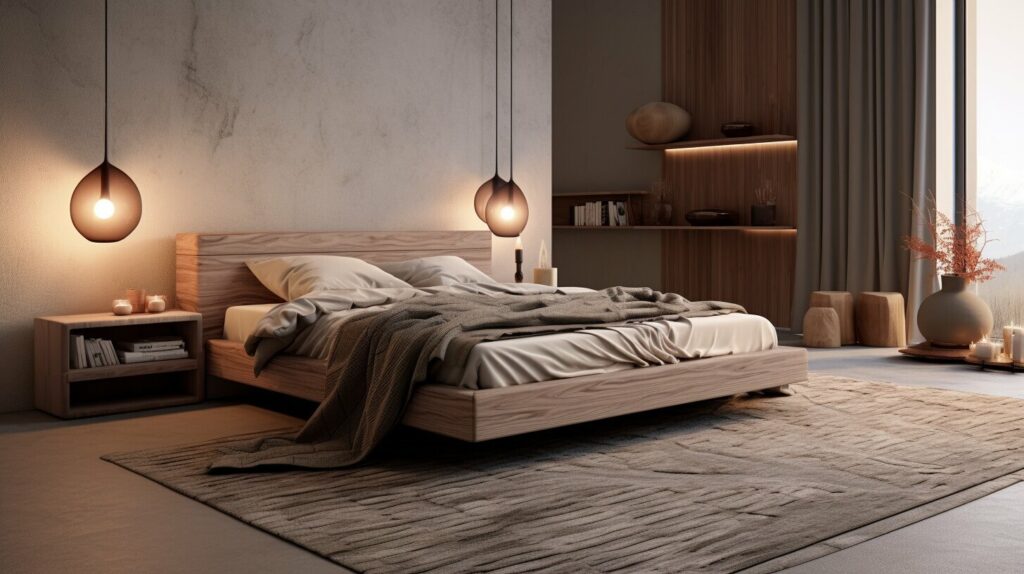Lamps and Lighting
Studies show that natural light is beneficial for both mental and physical health, improving sleep and reducing stress. To brighten up a space without many windows, interior designers recommend using a variety of lighting sources, including overhead, task, table, and standing lamps. Soft bulbs can create a warm and inviting atmosphere, while mirrors can make a room feel larger and reflect light. Light-colored walls and floors, as well as light-colored rugs, can enhance brightness. Wallpaper and colors inspired by nature can also help brighten windowless rooms.
Key Takeaways
- Natural light is beneficial for mental and physical health.
- Use a variety of lighting sources, including overhead, task, table, and standing lamps.
- Mirrors can make a room feel larger and reflect light.
- Light-colored walls and floors enhance brightness.
- Colors inspired by nature can help brighten windowless rooms.
Make the Most of Natural Light
One of the best ways to brighten up your space is by maximizing the use of natural light. Not only does natural light have numerous health benefits, but it also creates a warm and inviting atmosphere. Here are some tips to help you make the most of the natural light in your home:
- Remove heavy drapes and opt for light and breezy curtains that allow sunlight to filter in. This will help create a brighter and more open feel in your space.
- Make sure to open your windows and balcony doors regularly to draw in sunlight and fresh air. This can significantly enhance the brightness of your space.
- Regularly clean your glass panes to ensure maximum light penetration. Dust and grime can block sunlight from entering your room, so keeping your windows clean is essential.
By following these simple steps, you can harness the power of natural light to transform your space into a bright and uplifting environment. Natural light not only improves the overall aesthetic of your home but also positively impacts your well-being.
Expert Tip: Embrace the Sun
“Natural light is a valuable resource that can instantly improve the look and feel of any room. By maximizing the use of windows and incorporating light, airy decor, you can create a space that feels open, inviting, and filled with positive energy.” – Lighting Designer, Jane Anderson
So, open those curtains, clean those windows, and let the sun work its magic in your home. By making the most of natural light, you’ll create a bright and cheerful living space that you’ll love spending time in.
| Benefits of Natural Light | Tips for Maximizing Natural Light |
|---|
| 1. Improves mood and boosts energy levels | 1. Use light and breezy curtains |
| 2. Enhances productivity and focus | 2. Open windows and balcony doors regularly |
| 3. Supports better sleep and reduces stress | 3. Clean glass panes for maximum light penetration |
| 4. Creates a warm and inviting atmosphere | |
Remember, natural light is a free and abundant source of illumination that can greatly enhance the overall ambience of your home. By implementing these tips, you’ll not only brighten up your space but also enjoy the numerous benefits that natural light has to offer.
Embrace Creative Lighting Solutions
When it comes to brightening up your space, there are numerous creative lighting solutions that can add charm and functionality to any room. Consider incorporating the following lighting options:
String Lights
String lights have become a popular choice for adding a touch of whimsy and ambiance to any space. Whether you wrap them around a headboard, drape them across a wall, or hang them from the ceiling, string lights can instantly transform a room into a cozy and enchanting retreat.
Plug-in Wall Sconces
If you’re looking for ornate lighting without the hassle of electrical work, plug-in wall sconces are the perfect solution. These fixtures can be easily installed and lend a touch of elegance to any room. With a variety of styles to choose from, you can find a wall sconce that complements your decor and provides the right amount of illumination.
Arc Floor Lamps
Make a statement with an arc floor lamp that not only brightens up a space but also serves as a stylish focal point. These lamps feature an arched design that allows you to position the light exactly where you need it. Place it next to a reading nook or over a dining table to create a warm and inviting atmosphere.
Mirrors
Strategically placing mirrors in a room can amplify the existing light and make the space feel more open and airy. Consider hanging a large mirror opposite a window to reflect the natural light or position smaller mirrors strategically to bounce light around the room.
Table Lamps
Table lamps are not only functional but also a great way to add a touch of style and personality to your space. Place them on bedside tables, desks, or side tables to provide task lighting and create a cozy ambiance. With various designs and sizes available, you can find the perfect table lamp to suit your needs and enhance your decor.
Plug-in Pendant Lights
If you want to add overhead lighting without the need for rewiring, plug-in pendant lights offer a convenient solution. These hanging lights can be plugged into an existing outlet and instantly brighten up your space. Choose from a range of styles, shapes, and colors to find the perfect pendant light that complements your aesthetic.
Flameless Candles
For a cozy and romantic atmosphere, consider using flameless candles. These battery-operated candles provide the warm glow of a traditional candle without the worry of an open flame. Place them on tables, shelves, or in lanterns to create a serene and relaxing environment.
Smart Bulbs
Upgrade your lighting with smart bulbs that allow you to control brightness, color temperature, and even change the ambiance of a room with just a tap on your smartphone. These innovative bulbs offer convenience and flexibility, allowing you to create the perfect lighting atmosphere for every occasion.
Ceiling Fixtures
When it comes to brightening up a room, don’t forget about ceiling fixtures. Whether it’s a stylish chandelier, a sleek flush mount, or a modern pendant light, ceiling fixtures can provide an overhead lighting solution that adds both functionality and style to your space.

With these creative lighting solutions, you can transform your space into a well-lit and enchanting haven. From string lights and plug-in wall sconces to arc floor lamps and smart bulbs, there are endless possibilities to brighten up your home and create the perfect ambiance.
Incorporate Light-Enhancing Decor
When it comes to brightening up your space, incorporating light-enhancing decor can make a significant impact. From mirrors to light-colored paint, there are various elements you can introduce to maximize brightness and create an inviting atmosphere. Let’s explore some key decor solutions that can help optimize the lighting in your home.
Reflective Mirrors
Mirrors are a versatile decor piece that can not only add visual interest but also reflect light, creating the illusion of a larger and brighter space. Strategically placing mirrors across from windows or light fixtures can amplify the natural and artificial light in a room. Consider incorporating wall-mounted mirrors or free-standing floor mirrors to enhance the brightness of your space.
Light-Colored Paint
Choosing light-colored paint for your walls and ceilings can greatly improve brightness by reflecting more light. Opt for shades such as white, cream, or light pastels to create an airy and open feel in your rooms. Light-colored paint can also complement different lighting fixtures, allowing them to stand out and serve as focal points in your space.
Strategic Light Fixtures
Light fixtures play a crucial role in enhancing the overall lighting ambiance of your home. Consider installing wall sconces or pendant lights to provide both functional and decorative lighting in specific areas. These fixtures can add depth and dimension to your rooms while increasing brightness. Task lighting, such as desk lamps or under-cabinet lights, can also be incorporated to improve visibility in specific areas.
| Decor Element | Advantages |
|---|
| Mirrors | Reflect light, create the illusion of a larger space |
| Light-Colored Paint | Enhance brightness, reflect more light |
| Strategic Light Fixtures | Provide functional and decorative lighting, increase brightness |
| LED Lighting | Add indirect illumination, energy-efficient |
By incorporating these light-enhancing decor elements, you can transform your space into a well-lit and inviting sanctuary. Experiment with different combinations and placements to find the perfect balance between functionality and aesthetics. Creating an atmosphere that embraces brightness will not only uplift your mood but also make your home feel more spacious and welcoming.
Optimize Brightness with Design Elements
When it comes to brightening up your space, design elements play a crucial role in optimizing brightness and creating a welcoming atmosphere. Here are some key design elements to consider:
Mirrored Furniture
Mirrored furniture not only adds a touch of elegance to your space, but it also helps amplify light and create a sense of spaciousness. Strategically placing mirrored pieces, such as a mirrored coffee table or dresser, can reflect light from windows or light fixtures, making your room appear brighter and more open.
Reflective Paint Colors
Choosing the right paint colors can significantly impact the brightness of your space. Opt for light and reflective paint colors, such as white, cream, or light grays. These colors bounce light around the room, creating a vibrant and airy ambiance. Combine contrasting hues on walls to add depth and create the illusion of more light.
Light-Colored Flooring and Decor
Light-colored flooring, such as neutral carpets or light wood, can enhance brightness and make your space feel more expansive. Additionally, incorporating light-colored decor, such as throw pillows, curtains, or artwork, can contribute to the overall brightness of your room.
Light Shelves
Light shelves are not only functional but also offer a stylish way to brighten up your space. These shelves can be used to display decorative items or even as additional light sources by incorporating LED strip lighting underneath. Light shelves add visual interest and can help distribute light more evenly throughout the room.
| Design Element | Description |
|---|
| Mirrored Furniture | Reflects light, creating a sense of spaciousness |
| Reflective Paint Colors | Bounces light around the room, enhancing brightness |
| Light-Colored Flooring and Decor | Contributes to the overall brightness of the space |
| Light Shelves | Adds functionality and distributes light more evenly |
By incorporating these design elements into your space, you can optimize brightness and create a visually pleasing and inviting environment.
Bring Style and Functionality with Lighting Accessories
Lighting accessories can be the perfect finishing touch to your interior design, adding both style and functionality to your space. Whether you’re looking to create a cozy and ambient atmosphere or enhance the overall brightness of your room, there are a variety of lighting accessories that can help you achieve your desired effect.
LED Strip Lights
LED strip lights are a versatile and popular choice for adding a touch of style and ambiance to any room. These flexible lights can be easily installed under cabinets, along shelves, or even behind furniture to provide indirect illumination. With LED technology, you can choose from a wide range of colors and brightness levels to suit your mood and decor. They are also energy-efficient, ensuring long-lasting and cost-effective lighting solutions for your home.
String Lights
If you’re looking to create a warm and enchanting atmosphere, string lights are a perfect choice. Whether it’s for a holiday display or everyday use, string lights can add a cozy and inviting feel to any space. Consider using warm-toned all-white LED string lights for a soft and romantic glow. You can easily hang them along walls, wrap them around furniture, or drape them across ceilings to create a magical ambiance.
Electric Candles
If you love the warm flicker of candlelight but prefer a safer and more convenient option, electric candles are a great alternative. These flameless candles can add a touch of elegance and coziness to your space without the worry of an open flame. You can place them on tabletops, shelves, or even in lanterns to create a soothing and inviting atmosphere.
| Accessories | Description |
|---|
| Smart Bulbs | Smart bulbs offer customizable brightness levels and color options, allowing you to create the perfect lighting for any occasion. |
| Dimmers | Dimmers provide flexibility in adjusting the brightness levels of your lights, allowing you to create a variety of moods and ambiances. |
With the right lighting accessories, you can transform your space into a haven that perfectly balances style and functionality. Whether you choose LED strip lights, string lights, electric candles, smart bulbs, or dimmers, these accessories are sure to enhance the overall atmosphere of your home. Experiment with different combinations and settings to create the perfect lighting scheme for every occasion.
Upgrade Your Lighting Tech
When it comes to creating the perfect ambiance in your space, upgrading your lighting technology can make a world of difference. With smart bulbs, smart LED strips, and dimmer switches, you have the power to transform your lighting setup and create various atmospheres to suit your mood and needs.
Smart bulbs are a game-changer in lighting technology. With the ability to be controlled remotely through a smartphone or voice commands, they offer convenience and versatility. You can adjust the brightness, color temperature, and even set schedules to mimic natural lighting conditions throughout the day. Whether you want energizing daylight brightness or a relaxing, softer glow in the evenings, smart bulbs allow you to customize your lighting experience.
Smart LED strips are another fantastic option for upgrading your lighting. These strips can be easily installed under cabinets or along shelves to provide indirect illumination. With the ability to change colors and brightness levels, they offer endless possibilities for creating unique lighting effects and highlighting different areas of your space.
Dimmer switches are an essential addition to your lighting tech arsenal. They give you full control over the brightness levels in your space, allowing you to create the perfect ambiance for any occasion. Whether you want bright, focused lighting for work or a soft, cozy glow for relaxation, dimmer switches offer the flexibility to adjust the lighting intensity to your preference.
Enhance Your Space with Smart Lighting
With smart bulbs, smart LED strips, and dimmer switches, you can upgrade your lighting technology and take your space to the next level. Whether you’re looking to create a vibrant, energizing atmosphere or a relaxing, cozy ambiance, these smart lighting solutions provide endless possibilities for customization and convenience.
By incorporating smart technology into your lighting setup, you can easily adjust the brightness, color, and intensity of your lights to suit your mood and needs. Whether you’re hosting a dinner party, enjoying a quiet evening at home, or working on a project, smart lighting allows you to create the perfect lighting environment with just a few taps on your smartphone or a simple voice command.
Smart bulbs, smart LED strips, and dimmer switches give you the freedom to experiment with different lighting effects, colors, and intensities, allowing you to transform your space and enhance its overall appeal. With the power of technology at your fingertips, you can create a truly immersive and enchanting lighting experience in your home or office.
Tips for a Well-Lit and Enchanting Interior
Creating a well-lit and enchanting interior is easier than you think. With the guidance of lighting experts, you can transform your space into a bright and inviting haven. Start by prioritizing natural light – open up curtains or blinds during the day to let in the sunshine and embrace the beauty of the outdoors. Mirrors are another secret weapon for enhancing brightness – strategically place them to reflect light and create the illusion of a larger space.
When it comes to choosing light fixtures, opt for designs that combine both functionality and aesthetics. Consider pendant lights, chandeliers, or wall sconces that not only illuminate your space but also add a touch of style and personality. Additionally, explore creative decor solutions that can balance natural and artificial light. From light-colored paint and rugs to decorative items that reflect light, these details can all contribute to a brighter and more inviting atmosphere.
Remember, the key to achieving the perfect lighting balance lies in experimentation. Play around with different lighting styles to create the desired ambience for each area of your home. Don’t be afraid to mix and match various types of lighting sources, such as floor lamps, table lamps, and overhead fixtures, to create layers of light. By embracing the expertise of lighting professionals and incorporating these tips, you’ll be well on your way to a well-lit and enchanting interior.
Source Links



